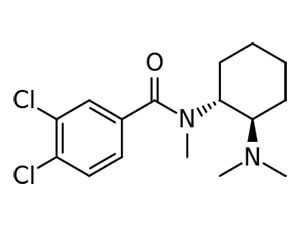U-47700 is classified as a Schedule I Drug by the DEA
- The drug has a high potential for abuse.
- The drug has no currently accepted medical treatment use in the U.S.
- There is a lack of accepted safety for use of the drug under medical supervision.
What is U-47700?
U-47700 is a synthetic opioid developed in the 1970s by the Michigan-based pharmaceutical manufacturing firm Upjohn. A chemical compound formed during research, U-47700 sat dormant for many years but has resurfaced on the streets. U-47700 is being sourced overseas from China and Eastern Europe. The painkiller is almost eight times stronger than morphine and is readily available, and affordable, online. U-47700’s extreme potency, and lack of government regulation, has health officials deeply concerned as overdoses rise.
U-47700 is commonly referred to as U-4, Pink or Pinky.
What does U-47700 look like?
It often has the appearance of other drugs, making it difficult to detect among known opioids. U-47700 can be found in powder or liquid forms.
How is U-47700 abused?
It is snorted in powder form, but can also be taken into the body through oral, intravenous and rectal routes.How does U-47700 affect a person?
U-47700 is a potent pain reliever. It can have several effects on the body including sedation, euphoria, itchiness, decreased libido, difficulty urinating, constipation and respiratory depression which could be harmful or fatal.What are the health effects/risks of using U-47700?
Many users of U-47700 are being sedated to the point they stop breathing.
If the overdose is not immediately fatal and there is someone available to call for help, first responders can employ naloxene, an opiate antidote, in an effort to save a life. However, there are fears the effects of U-47700 are so strong it could be resistant to naloxene, especially when multiple doses are not available.
Unregulated drugs pose extreme danger as suppliers may practice inconsistent manufacturing practices. Each batch can have sizable variations in potency and makeup, putting users at high risk of a fatal overdose.

